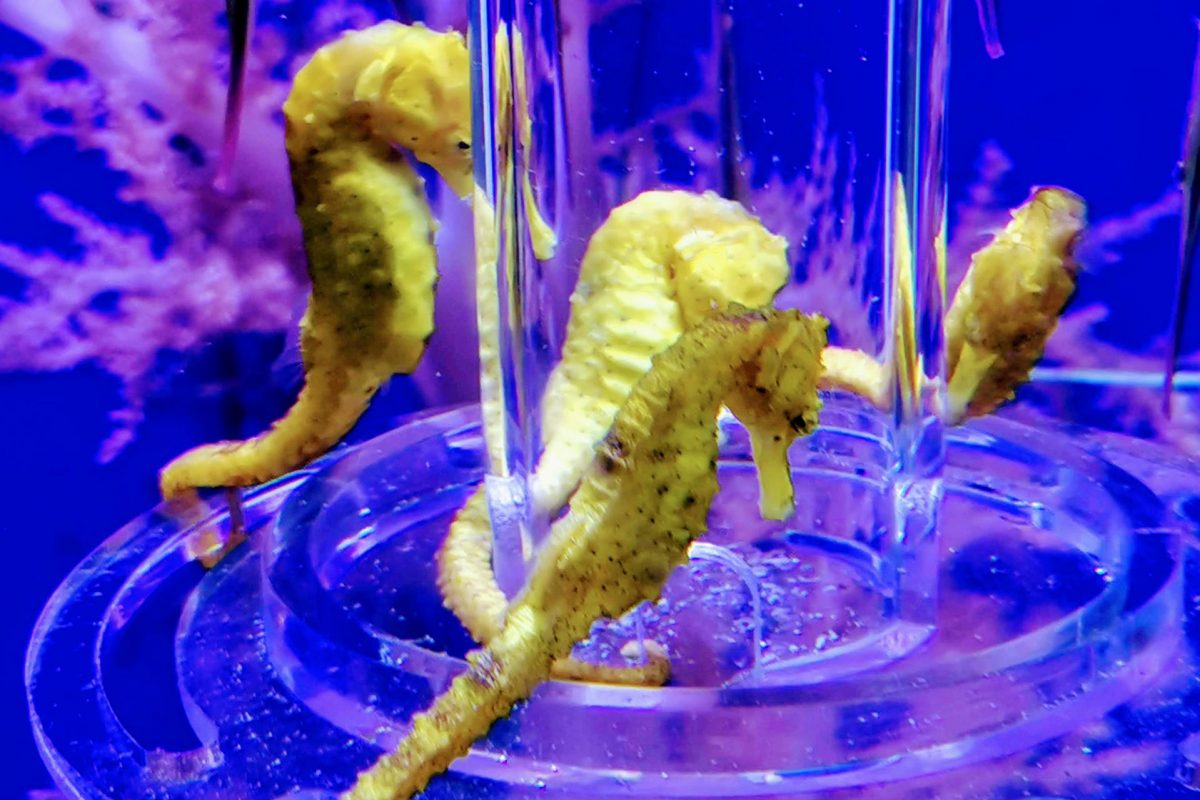As part of our work to lessen our negative environmental impacts, we wanted to see what could be done to reduce our water usage – not easy when our Aquarium relies on tap water, rather than pumping water from the sea, as coastal aquariums can do.
London tap water – great for humans, not for fish
While it’s fine for us to drink, tap water is not suitable for our Aquarium animals – especially in London where our water has high calcium levels.
We need to filter it through a process called reverse osmosis (RO), and then we add the right type and amount of salt for our saltwater tanks. However, it takes four litres of tap water to produce one litre of aquarium water, leaving three litres of wastewater left. This is a very concentrated version of tap water, and not suitable for consumption.

Saving ‘waste’ water
We’ve been able to use this waste water in the Gardens by connecting our filter up to storage tanks on the hill behind the Museum building.
But pumping the water 10-15m uphill was damaging the filter, and it was labour intensive for the Gardens team to transfer the water from the tanks to a bowser – a sort of mobile watering can – and drive it to where it was needed on our 16.5-acre site.
We’ve now turned our system around, moving the filter up to the existing water storage tanks, so the water is purified there and supplied to the aquarium using gravity.
This also allows us to use the wastewater for flushing the Gardens toilets.

Good news for the Gardens
As part of our work in 2023 to upgrade all the pathways on our site, we added water supply pipes and installed standpipes so the Gardeners can access this water wherever they are on the estate.
As well as saving time and labour for the Gardens team, the new wastewater supply also serves new drip-line watering systems in some areas, including the micro forest, Sunken Garden, Medicinal Garden and herbaceous borders.
Using timers means we’re able to water some areas during the cooler evening and early morning temperatures, when less water is immediately lost to evaporation.
More good news
Collecting and reusing the Aquarium wastewater saves over half a million litres of water going down the drains each year.
We pay for the water we draw from the taps, and again for any that goes down the drain, so any decrease in usage or waste is a financial saving – money we can use elsewhere to maintain our Gardens and collections.
We’re also removing the wear and tear on our Aquarium filters, saving our Gardeners’ time and effort, and future-proofing our water supply system on site, which will allow us to connect up some further water-saving measures during our Nature + Love project later this year, including rainwater capture.
Thanks to…
So, we’d like to say a big thank you to the unsung heroes in the Horniman team, dealing with the pipes and pumps, the filters and tanks, water metering and all the other ‘boring’ bits, so that we can all enjoy the fabulous Aquarium and glorious Gardens, without it costing the earth.


